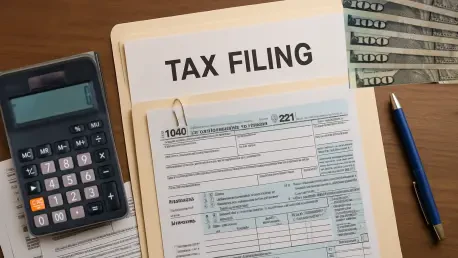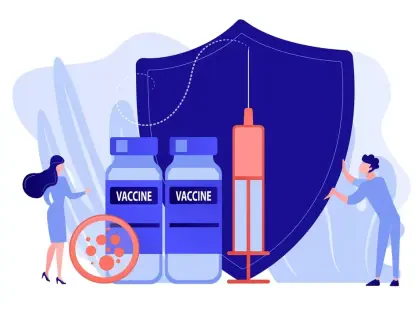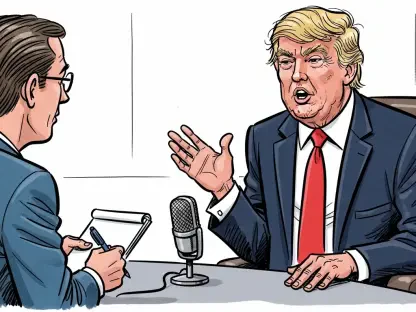Setting the Stage: A Missed Opportunity in Tax Filing Innovation
In an era where digital solutions dominate everyday tasks, the tax preparation market stands at a critical juncture with the Internal Revenue Service’s recent announcement that its Direct File program, a free online tax filing initiative, will not launch as planned by 2026. This delay reverberates through a $14 billion industry dominated by private players like Intuit and H&R Block, where millions of American taxpayers spend substantial amounts annually on filing services. The promise of a no-cost, government-backed alternative has long been a beacon of hope for low-income households and small businesses seeking relief from these expenses. This analysis dives into the market dynamics affected by the postponement, exploring how it reshapes competition, consumer behavior, and technological trends in tax preparation. The implications of this setback extend beyond mere inconvenience, highlighting systemic challenges in public-private collaboration and digital transformation within essential services.
Market Trends and DatNavigating the Current Landscape
Dominance of Private Tax Preparation Services
The tax preparation market remains heavily influenced by private corporations, with companies like TurboTax and H&R Block capturing a significant share of the 150 million tax returns filed annually in the United States. Industry reports indicate that over 60% of taxpayers rely on paid services or software, spending an average of $150 per return. This reliance stems from the complexity of tax codes and the perceived ease of commercial platforms, which have refined user interfaces and customer support over decades. The absence of Direct File in the near term solidifies this dominance, as consumers lack a viable free alternative directly from the government. Market data suggests that without intervention, private providers may continue to see steady revenue growth, particularly among middle-income filers who prioritize convenience over cost.
Consumer Sentiment and Demand for Free Solutions
Shifting consumer sentiment reveals growing frustration with the cost of tax filing, especially among lower-income groups who qualify for free options but often fall prey to upselling tactics by commercial providers. Surveys conducted in recent years show that nearly 70% of taxpayers would opt for a free, government-run platform if available, citing trust in federal oversight as a key factor. The delay in Direct File pushes this demand into limbo, potentially dampening public enthusiasm for government-led digital initiatives. This trend underscores a missed opportunity to capture a sizable market segment eager for equitable access, leaving room for smaller, nonprofit filing services to gain traction as interim solutions while the IRS reevaluates its timeline.
Technological Disparities in Public vs. Private Sectors
Technological capabilities further delineate the market, with private entities far outpacing the IRS in digital infrastructure for tax preparation. Commercial software boasts advanced features like AI-driven error checks and real-time refund estimates, built on years of iterative development. In contrast, the IRS grapples with legacy systems, some of which are decades old, hindering rapid deployment of a competitive platform like Direct File. This technological gap not only delays innovation but also risks eroding public confidence if a future rollout fails to match private sector standards. Market analysis points to a critical need for substantial investment in federal IT upgrades to bridge this divide, a factor likely contributing to the postponed launch.
Future Projections: What Lies Beyond the Delay
Short-Term Market Stability for Industry Giants
Looking ahead, the delay of Direct File until after 2026 is expected to maintain market stability for leading tax preparation firms in the short term. With no immediate threat from a government alternative, companies can continue to refine pricing models and expand digital offerings without pressure to compete on cost alone. Projections suggest a steady 3-5% annual growth in revenue for major players over the next two years, driven by increased marketing toward first-time filers and small businesses. However, this stability may breed complacency, potentially leaving these firms unprepared if public or legislative momentum for free filing options gains traction sooner than anticipated.
Long-Term Shifts in Competitive Dynamics
Over a longer horizon, from the current year to 2027, the market could witness significant shifts if the IRS successfully launches Direct File. Analysts predict that a well-executed platform could capture up to 20% of the tax filing market within five years of launch, particularly among filers with straightforward returns. This would force private providers to innovate, possibly through bundled services or reduced pricing, to retain market share. The competitive landscape may also see new entrants, such as tech startups focusing on niche tax solutions, capitalizing on the gap left by the delay. These projections hinge on the IRS overcoming current logistical and political barriers, a challenge that remains uncertain.
Policy and Advocacy as Market Catalysts
Regulatory and advocacy efforts are poised to shape future market trends as well. Growing bipartisan support for simplified tax processes could accelerate funding for Direct File, altering the timeline for its introduction. Grassroots campaigns pushing for tax equity are likely to intensify, influencing consumer expectations and pressuring lawmakers to prioritize accessible filing solutions. Market observers note that state-level initiatives, such as localized free filing programs, could emerge as testing grounds, potentially disrupting national market patterns. These policy-driven catalysts carry the potential to redefine how taxpayers interact with both government and private services, setting the stage for a more fragmented yet innovative industry.
Reflecting on the Past: Strategic Insights for the Future
Looking back, the postponement of the IRS Direct File program represented a pivotal moment that underscored deep-rooted challenges in modernizing public services within the tax preparation market. The sustained dominance of private providers, coupled with unmet consumer demand for free options, painted a picture of an industry resistant to change yet ripe for disruption. Technological disparities and policy inertia further compounded the issue, highlighting the complexities of balancing innovation with operational realities. Moving forward, stakeholders are encouraged to advocate for increased federal investment in digital infrastructure to ensure future initiatives meet market expectations. Private firms are advised to anticipate competitive pressures by diversifying service offerings, while policymakers need to streamline funding and regulatory support for equitable tax solutions. These steps, grounded in lessons from the delay, aim to foster a market environment where accessibility and efficiency can coexist, ultimately benefiting millions of American taxpayers.









